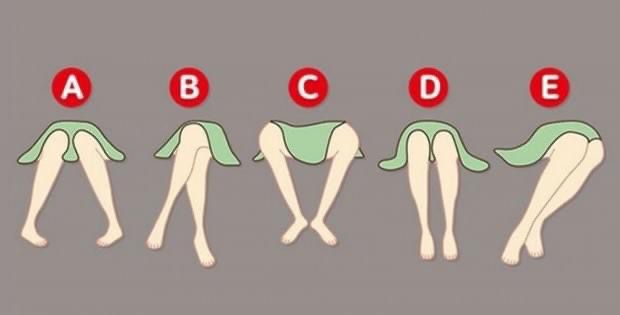SO FAR NO ONE HAS FOUND THE NUMBER INSIDE THE EYE, NO WINNER YET

Meghan Markle, the Duchess of Sussex, and her daughter Princess Lilibet had a tender conversation during their first trip abroad following their resignation from royal duties.
Motherhood has a darker side, as Meghan Markle is discovering.
During her and Prince Harry’s three-day tour in Nigeria on May 10, the Duchess of Sussex couldn’t resist sharing a sweet conversation she had with their 2-year-old daughter Princess Lilibet while visiting with pupils at the Lightway Academy.
Meghan said to a kindergarten class, “Our daughter, Lili, she’s much, much tinier than you guys,” according to People. She will turn three soon. And a few of weeks prior, all she would see when she looked at me was my eye’s reflection. She then says, “Mama, I see myself in you.”
Now that she was speaking so literally, the 42-year-old acknowledged. But my interpretation of those words was quite different. “Yes, I do see myself in you, and you see me in you,” I thought to myself.
She spoke to the pupils, “As I look around this room, I see myself in all of you as well,” while seated next to Harry in the classroom.
The pair, who also happen to be the parents of five-year-old Prince Archie, engaged in singing and dance lessons with the children and played games with them throughout their visit. Meghan said, “That’s Lili’s favorite class,” according to the publication. “Perhaps it’s all the hopping around,”

Although Meghan and Harry would rather keep their personal life out of the public eye, they frequently give brief peeks into their family of four.
In February, the Duke of Sussex said on Good Morning America, “The kids are doing great.” The children are maturing like all children do—quite quickly.
The 39-year-old went on, “They both have an amazing sense of humor and make us laugh and keep us grounded every single day like most kids do.” “I’m just really appreciative to be a father.”
There’s something fascinating about the way optical illusions and other mind-bending images almost distort your brain.
There are hundreds of such pictures on the internet and in old books — but this one comes from real life.
There’s an “invisible” being in this picture, but it’s not a sneaky intruder or burglar…

According to 7 News Perth, a woman named Christina Suvo originally shared the photo.
Christina claimed there is a dog hidden in the picture.
However, many people were skeptical. It doesn’t look like there are any living beings in the picture. But trust me, there’s a dog there.
Do you see where he is?

Here’s the full picture of the kitchen. Can you see the dog now?
If you cann’t find him, do not worry. We didn’t see it at first, either.

Let’s tackle this the way people usually solve optical illusions: we’ll break up the image into squares.
Take one square at a time, beginning with the top left one.
Have you found the dog yet? Here is a clue: he’s in box four.

Still can’t see him? Keep in mind you’re looking for a dog in the lower right corner of the picture…
To see exactly where the dog is, click on the image below!

It’s still hard to see him, but you can probably see the contrast between his lighter-colored stomach and the black carpet.
The arrows in the above picture show the dog’s eyes, ears, and belly.
Yes, it’s still hard to see the black dog on the black carpet, but he’s definitely there.
The lighter color of his tummy and the pink inside his ears are actually clearly visible.
If you’re still having trouble seeing the dog, he’s easier to see in the above picture. This time, he’s been highlighted.
You should be able to see the dog’s face quite clearly now. He has a long nose, big adorable eyes, and it looks like one of his ears is turned inside out.
The dog is an adult black Labrador. Labradors usually weigh between 65-75 pounds (30-35 kilos), so it’s quite impressive that such a big dog was able to hide in this picture!
Growing up, Clint Eastwood’s hidden daughter was oblivious to her Hollywood heritage. Her renowned father was a surprise to her as an adult, as she was raised by an adopted family. Laurie Murray, a quiet teacher by trade, is very similar to Clint, and the two of them have a strong friendship now.
Fans have always been captivated by Clint Eastwood’s family, but most people are unaware of the full scope of his life story. His seven offspring, most of whom followed in his footsteps and sought professions in film, are well-known to the globe.

Still, for decades the existence of an eighth Eastwood was shrouded in mystery. See the amazing tale that reunited Clint’s blended family—which includes the daughter he never met—together.

Renowned for his rugged personas and extraordinary trajectory as an actor, filmmaker, and producer, Clint is among Hollywood’s most recognisable personalities. His portrayal of “The Man with No Name” propelled him to prominence in the 1960s, and he went on to represent tough, masculine cinema.

He is not just an actor but also a renowned director, having taken home Oscars for his work on “Unforgiven” and “Million Dollar Baby.” Clint was able to maintain a great deal of privacy about his personal life, particularly his complicated family dynamics, in spite of his notoriety.
He has been married twice in his personal life. Before divorcing in 1984, he was married to Maggie Johnson for almost thirty years, beginning in 1953. Due to his demanding work schedule and personal problems, Clint and Maggie’s relationship was frequently strained; yet, they were blessed with two children, Kyle and Alison.

The Hollywood actor wed TV anchor Dina Ruiz in 1996 following his split from Maggie, and the two remained together until 2014. Clint not only got married but also had multiple children with various women. He was reputed to have had seven children for a very long time.
Kimber Eastwood, his first child, was born in 1964 as a result of his liaison with Roxanne Tunis. Kimber has kept a quiet profile compared to her siblings while working in the entertainment industry as a producer and makeup artist, including on “Wheel of Fortune” since 2005.

The 1968-born jazz musician and composer Kyle Eastwood is well-known for his work on his father’s motion pictures, which include “Mystic River” and “Gran Torino.” He has established a solid career for himself in the music industry, frequently touring abroad and displaying his abilities outside of the Eastwood brand.
I guess I came to the conclusion that I preferred music to acting. In a 2021 interview, he said, “I’ve always loved it; it’s always been a passion of mine.”

Born in 1972, Alison Eastwood followed in her father’s footsteps and became an actor and director in the entertainment business. She frequently collaborated with her father in the movies “Midnight in the Garden of Good and Evil” and “The Mule,” among others.

The most well-known of Clint’s offspring, Scott Eastwood, was born in 1986 to former flight attendant Jacelyn Reeves. He did not spend much time with his father and lived much of his boyhood in Hawaii with his mother.
But after Scott relocated to California to live with his dad during high school, the two did eventually have some quality time together as father and son. With appearances in widely watched movies including “Fury,” “The Longest Ride,” and “Suicide Squad,” Scott has established a prosperous acting career.

Scott, who bears a remarkable resemblance to his father, frequently embraces the family tradition while attempting to establish his own reputation in Hollywood. Working with my father has shown me that I’m always learning new things. In 2016, he said in an interview, “I’m just a kid in this business.”

In 1988, Scott’s younger sister Kathryn Eastwood was born. Her acting and screenplay endeavors included appearances in movies like “Jersey Boys” and “Virus of the Dead.” In contrast to Scott, she has continued to be a more subdued presence.

Born in 1993 to actress Frances Fisher, Francesca Eastwood went on to pursue careers in acting and reality television. Francesca, well-known for her part in “Heroes Reborn” and her visits on “Mrs. Eastwood & Company,” blends her family’s notoriety with her own distinct style, frequently making an appearance at red carpet events and in public.

Morgan Eastwood, the youngest of Eastwood’s known children, was born in 1996 while he was still married to Dina Ruiz. Morgan had a cameo on the reality TV program “Mrs. Eastwood & Company” and a few cameos in her father’s movies.
Over the years, she has mostly avoided the spotlight in favor of concentrating on her personal life outside of Hollywood. Years later, however, it came to light that Morgan and her siblings had an older sister who had been lost for a long time, and her story seemed to have been lifted directly from a Clint Eastwood film.

Laurie Murray, Clint’s secret daughter, was given up for adoption at birth by her mother, who kept the Hollywood star in the dark about her pregnancy. It wasn’t until she was an adult and looking for her birth parents that Laurie learned who her biological father was.

After being adopted by a local couple, Laurie, now 70, grew up in Seattle and made the decision to look for her biological parents more than thirty years ago. She hired someone to assist her in finding her roots because she had a strong desire to do so.

They found out throughout the research that Clint Eastwood’s name was on the documents belonging to her birth mother. A close friend disclosed, “From what it looked like, Clint Eastwood had no idea that she was even pregnant.”
After their connection ended, Laurie’s birth mother—who allegedly had a serious relationship with Clint in Seattle while he was engaged to his first wife—made the decision to place the child for adoption.

Laurie tried to get in touch with her birth mother, but she didn’t want to be contacted, so Laurie went to Eastwood on her own. The specifics of their first encounter are still unknown, although the director was said to have responded positively and hospitably when he found out he had another daughter.

“It obviously came as a great shock to Laurie, but I believe that Clint was extremely receptive to her and the situation,” said the companion. Clint and Laurie hit it off right away since they both loved the outdoors and golf.

As a member of Tacoma Country & Golf Club and an enthusiastic golfer, Laurie regularly spent time playing rounds of golf with her biological father. The two were seen hanging out at Clint’s Carmel, California, house and on family trips.

“Laurie and her family have spent Thanksgiving with the Eastwoods in the Carmel area a few times,” said a friend. Laurie made her first appearance as Clint’s daughter in public in December 2018 at the Los Angeles premiere of his movie “The Mule.”

She posed for cameras with Clint’s other seven children, posing as Laurie Eastwood. Laurie and Clint were spotted speaking and having a drink at the reception, demonstrating the intimacy that had grown between them over time.
Laurie, a mother of two who lives in Lakewood, Washington, is an elementary school teacher at a private school in addition to attending the University of Washington. Her friends characterize her as a reserved, compassionate individual who seldom discusses her relationship with Eastwood.

But social media users said she didn’t need to because the evidence was already there. Someone said, “She looks so much like him.” Someone else mentioned, “Well, she got her dad’s eyes.”
A third person said, “She looks just [like] his mother,” and a fourth said, “She’s a beautiful woman, must have been a stunner in her day, with her huge Bambi eyes.”

Laurie Murray’s life entered a new phase of family and acceptance as a result of her relationship with Eastwood. Laurie found a place in the Eastwood family through golf outings, get-togethers, and private times away from the spotlight. This place was unexpected but greatly treasured.
Bruce Willis, suffering from dementia and aphasia, appears to be worsening, judging by recent photos. The 69-year-old actor was spotted over the weekend in scorching California (42°C) sitting in the passenger seat of a car. Dressed casually in a cap and polo shirt, his face showed signs of fatigue. His bodyguard was by his side the entire time.
Recently, Willis has rarely been seen in public, with his family providing him with the greatest strength and support. The action movie star is the father of five daughters: Mabel Ray (12) and Evelyn (10) with his wife, Emma Heming Willis (46), and Rumer (36), Scout (33), and Tallulah (30) from his marriage to Demi Moore (61).

Foto:Javiles/Bruce / BACKGRID / Backgrid USA / Profimedia
On August 22, Rumer posted a picture with her father on Instagram while answering questions about his health.
“He’s great. I love him so much. Thank you,” she briefly wrote.
A few months earlier, she revealed on a talk show that her father was “doing well” and slowly building a relationship with her one-year-old daughter, Louetta.

“Lou has started walking, she went up to her grandpa, it was so sweet,” Rumer shared. She also expressed hope that by being open about her father’s condition, she and her family can help others facing similar circumstances.
“Being transparent about Dad’s condition is important for us. Our goal is to help others and bring attention to this illness, hoping for a cure or anything that could be useful,” Bruce’s daughter stated.
In March 2022, Demi Moore publicly addressed Bruce’s health through an official statement:
“To Bruce’s incredible fans and supporters… We want to share as a family that our beloved Bruce has been experiencing health issues and was recently diagnosed with aphasia, impacting his cognitive abilities. As a result, Bruce is stepping away from the career that has meant so much to him. This is a challenging time for our family, and we deeply appreciate your love, compassion, and support. We are going through this together as a strong family unit. Bruce always says, ‘Live it up!’ and we plan to do just that. With love, Emma, Demi, Rumer, Scout, Tallulah, Mabel, and Evelyn,” Demi’s Instagram post read.

A year later, in February 2023, Bruce Willis’ family announced that the actor was diagnosed with frontotemporal dementia (FTD).
In their statement, they expressed that while the news was painful, it brought some relief to have a definitive diagnosis.
“Today, there are no treatments for this disease, but we hope that can change in the years ahead. As Bruce’s condition advances, we hope that media attention will focus on raising awareness of this illness, which requires much more understanding and research. Bruce has always believed in using his voice to help others and raise awareness about important issues, both publicly and privately. We know in our hearts that if he could, he would do everything to shine a light on this disease,” the family stated.
Malia Obama never fails to turn heads on the red carpet, demonstrating her ability to pull off a daring look.
People were talking about her after her recent appearance at the 2024 Deauville American Film Festival in France.
Malia, the eldest child of former President Barack Obama and First Lady Michelle Obama, dazzled everyone on Friday, September 6, with an eye-catching attire that showed off her adventurous sense of style.

Malia, who is renowned for experimenting with fashion, did not let her unusual attire disappoint, drawing attention and igniting discussions.
The 26-year-old dazzled spectators with a peek of her toned stomach in a black, gray, white, and red checkered shoulder corset top. She combined this with an asymmetrical skirt in blue and white plaid, highlighting her daring sense of style with the clash of patterns. Malia finished off her ensemble with chic, knee-high black boots that gave her already avant-garde ensemble a bit of edge.
She exuded confidence and sophistication by wearing few accessories and letting her brown goddess braids and natural beauty take center stage.

Although her appearance was well received, it also sparked some humorous remarks on the internet, particularly after Vogue uploaded pictures of the former First Daughter to Facebook. It was impossible for some critics to refrain from calling her ensemble a “tablecloth,” with one remarking, “Looks like she’s wearing a tablecloth and a wrinkled one.”
In a comical way, another person said, “Same cover I have on my dinner table at home.”
The group was even called “a mess” by one critic.
Malia’s supporters, however, swiftly defended her, praising her audacity and uniqueness.
In a comical way, another person said, “Same cover I have on my dinner table at home.”
The group was even called “a mess” by one critic.
Malia’s supporters, however, swiftly defended her, praising her audacity and uniqueness.
One admirer said, “Beautiful,” obviously amazed.
Another admirer tweeted, “Love that dress!” to show off their enthusiasm.
Her youthful sincerity was acknowledged by others, who commented, “Her look was spot on… Young, sensible, and with a VW vibe… She did it flawlessly!
The admiration didn’t end there. Some followers remarked on her timeless style throughout the years, with one saying, “That’s always been her style.” At least she doesn’t change.
In the midst of the talk over her bold appearance, Malia said she was thrilled to be at the festival in order to promote her short film. In a quick interview, she said, “I’m so excited.” “I mean, it’s exciting, but also a little scary because I’ve never done anything like this.”
Talking about her highly-discussed ensemble, Malia expressed her respect for the renowned designer responsible for the daring style. She grinned and exclaimed, “Vivienne Westwood, queen,” expressing her gratitude for the late designer’s impact.
She went on, “It’s cool.” She said, “I don’t know as much about fashion, but I’m happy to be wearing it,” exuding her signature charm and modesty.
Another significant turning point in the development of Malia’s public persona is her attendance at the Deauville American Film Festival. It happened barely eight months after she made her red carpet debut at the Sundance Film Festival in January, when she was 25 years old, and others criticized her appearance for being “tacky”.
A person’s sitting posture can reveal much about their personality, including their objectives and secrets. According to experts, the stance of the legs while sitting is very telling.
Take note of someone’s seating position the next time you’re with them if you want to understand more about their personality.
Seeing someone sit in the “A” position indicates they would rather avoid dealing with their difficulties. Instead of tackling their problems, they ignore them or blame others for them.

This preference can result in lost time and missed opportunities. These people, on the other hand, are frequently pleasant, inventive, and childlike. They have a certain magnetism that attracts people, even though they occasionally talk without thinking.
The B position is also highly revealing when analyzing someone’s seated posture. A person sitting with one leg crossed over the other distinguishes this stance.
Those who adopt this posture are usually highly private and keep their inner lives secret. They may have secrets they do not want others to know about and might be relatively quiet in social circumstances.
Despite this, they may be knowledgeable and wise, making them fascinating people to get to know.
Individuals described in the preceding chapter have a fantastic imagination and a penchant for daydreaming. Their creative ideas are highly valued at work, and their contempt for monotony drives them to seek out new experiences, explore the world, and build significant connections wherever they go
When dissatisfied with their condition, they are confident to start again and work their way up. They appreciate their time and energy and will not squander it on unsatisfying relationships or draining careers.
On the other hand, those in the comfort-seeking C position value their comfort above everything else. They take satisfaction in reaching perfection in their things or experiences and may become obsessed with pursuing that ideal.
They pay special attention to personal items such as clothing, shoes, perfumes, and more substantial assets such as furniture.
However, their meticulousness is frequently offset by their disorganization, and they may need help keeping their attention in hectic or chaotic surroundings.
Others may find their lack of attentiveness offensive since it can come across as dismissive or even arrogant when they are not paying attention to what is being said.
Finally, the dreamer and the comfort-seeker contribute distinct strengths and challenges to their respective roles. While one is a risk-taker and a creative inventor, the other values stability and physical comfort.
They can both contribute to a productive and fulfilling working environment by acknowledging their biases and working to mitigate their limitations.
A person’s sitting posture can indicate a lot about their personality. Those who prefer to sit upright and despise being late are frequently astute and vulnerable.
They respect their peace of mind and hesitate to express too many emotions. Kissing is an intimate act that should not be performed in public.
Individuals who sit with their feet firmly planted on the ground, on the other hand, tend to be more open and expressive of their emotions. They may appear rude sometimes but are not afraid to express their feelings.
Those who keep their feet crossed or folded under their chairs may struggle with socializing and regard it as a competition in which they must be wary of their competitors.
They seek refuge in their houses, where they may let down their guard and unwind. However, they may have difficulty receiving criticism since it feels personal.
People in the “E” position are usually patient and tenacious. They value appearance and are willing to try to look their best. They do not rush themselves or others because they think everything will work out quickly.
However, this could be due to their lack of self-confidence and inner unease. They find it challenging to deal with criticism because they take it personally and feel the need to defend themselves.
The sitting position can provide insight into a person’s nature. A simple seating decision can reveal a lot about a person, from their level of vulnerability to their confidence and emotional expression.
The three-year-old died after suffering a traumatic brain injury from a near-drowning incident on May 21.
Levi was hospitalized at a Salt Lake City hospital after accidentally driving a toy tractor into a river near the family’s home on May 21. Local law enforcement found Levi unconscious about a mile downstream.
Although he was initially declared brain dead and not expected to survive, the boy began showing signs of improvement.

“LEVI WOKE UP! I am shook, we don’t know much but the doctor said it was okay for me to get excited about that and I AM! My baby is so tough!” his mother Kallie Wright wrote on Facebook.
Unfortunately, the following day the results of an MRI “wasn’t good.”
“We’re shattered but it is just images that suggest a certain quality of life. Our real teller of all will be what Levi does over the course of a few days,” Kallie shared.
On June 2, Kallie shared devastating news.
“After several sleepless nights, lots of research, multiple conversations with the world’s best neurologists & millions of prayers we are here in the face of our biggest fear,” she wrote. “Levi showed us just enough to buy us time for all of this. We prayed those things were him defying odds & proving to us that he wanted to stay here but we see now he wanted to give us time to find peace with letting him go.”
After countless tests, scans, and consultations, the Wright family took Levi off life support.https://www.facebook.com/plugins/post.php?href=https%3A%2F%2Fwww.facebook.com%2Fkallie.wonnacott.9%2Fposts%2Fpfbid02NLPak3Kkh6mvEJwL4zDf9mjQVtkeKtQzdh1euqWBosZLVscVjtDEyTumtzReQdVAl&show_text=true&width=500&preview=comet_preview
The following day, June 3, a family friend, Mindy Sue Clark, confirmed on Facebook that Levi had died.
“I cannot even begin to explain how hard the last two weeks have been. From the moment my phone rang the night of his accident, to last night receiving the message that he had to go. I don’t want to focus on the bad or sad, even though it feels like someone ripped my heart out and squeezed it right in front of me. I want to focus on the many miracles we all got to bear witness to in those 12 days.”
“The most perfect three year old there ever was. So perfect we didn’t get to keep him. This baby boy moved mountains the last 12 days. He brought so many people together. In a world so dark, we got to see light at the hands of a child. He’s everything his mom and dad could’ve wanted him to be.”
Dolly Parton’s husband, Carl Dean, is a fascinating figure known for his private and reclusive nature, which stands in stark contrast to his wife’s flamboyant and public persona.
Born on July 20, 1942, in Nashville, Tennessee, Dean’s journey to becoming the spouse of one of the world’s most beloved and iconic country music stars is a captivating tale of a quiet and supportive presence behind the scenes.

Despite his preference for a low-key life, Carl Dean has remained an integral part of Dolly Parton’s world, providing stability and unwavering support throughout their long and enduring marriage.
One of the most intriguing aspects of Carl Dean’s life is his avoidance of the spotlight. Throughout their more than five decades of marriage, he has rarely made public appearances with Dolly Parton and is known for his aversion to interviews and media attention.
This reclusive nature has fueled curiosity and speculation about their relationship, with many wondering about the dynamics of a marriage that seemingly exists outside the public eye. Dolly Parton has often mentioned in interviews that Dean prefers to stay out of the limelight and let her shine, a choice that she respects and admires.
Despite his preference for privacy, Carl Dean and Dolly Parton’s love story is a testament to enduring love and commitment. They met when Parton was just 18 years old and Dean was 21, and their connection was immediate and deep.
They married in 1966, and their relationship has endured the ups and downs of fame and the music industry. Dolly Parton often attributes the success and stability of her marriage to her husband’s unwavering support and understanding of her career and the demands it places on their relationship.
Carl Dean’s role as a supportive partner behind the scenes has allowed Dolly Parton to thrive both personally and professionally, making their relationship a unique and enduring love story in the world of entertainment.
After more than 40 years, Dolly Parton’s husband was seen in public. Dolly Parton loves to be the center of attention on every occasion, but her husband is more at peace with being in the shadows and having a private life.
Dolly respected her husband’s decision, but fans are curious to hear more about Carl Dean, the artist’s husband. Recently, some pictures of Dean appeared.

Carl Dean is 77 years old and has been married to Dolly for 53 years. He was recently spotted with his personal assistant outside the family estate in Brentwood, Tennessee.

As I mentioned, Dolly is a wonderful artist who has managed to stay in the spotlight for over 50 years, and her husband is the exact opposite, he has managed to avoid being photographed since the 1970s. Even in recent photos we can see that Carl seems to have a completely different style from his wife. Contrasts attract, don’t they?

Sources close to the couple said that Carl is a rather withdrawn person and avoids leaving the home, unless it is absolutely necessary.

Carl and Dolly met in 1964, and after 2 years of marriage they got married. The two managed to have a beautiful marriage for over 50 years, but it seems that now the two live in different houses, but in the same property.

Dolly said that although her husband does not accompany her to concerts and events, he is her biggest fan and always helps her and gives her good advice.

Dolly appreciates her husband’s help, especially since she had a modest childhood back in the Great Smoky Mountains of East Tennessee.
Here is a portrait of Dolly from 1965, the same year she signed with Monument Records as a pop singer. Wasn’t she very beautiful?

Much of Dolly’s early success is do to her spot on Porter Wagoner’s television series The Porter Wagoner Show. The two were very good friends and had a close relationship, which is why Dolly wrote “I Will Always Love You” when she left the show.

After leaving Porter Wagoner’s show, Dolly really started her music career and experienced the success we all know today.
With her signature big blonde wig and perfectly made up face, Dolly relaxes in a Chicago Holiday Inn.

The New York City nightclub dedicated an entire themed party to Doly, the theme being farm. There were even haystacks and live animals.

Below is Dolly with her costars Lily Tomlin and Jane Fonda. They really seem to have a good time together!

Did you know that Dolly still has 11 siblings?
Here she is spending time with her brother David, who keeps out of the public eye. Dolly managed to maintain a good relationship with all her brothers and sisters.
I think it is something to be appreciated when you manage to maintain a relationship with your brothers and sisters, especially when there is such a large number of children in a family. It seems that Dolly knows how to maintain a relationship over the years, both with family and friends, and with her husband.